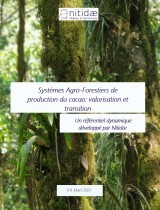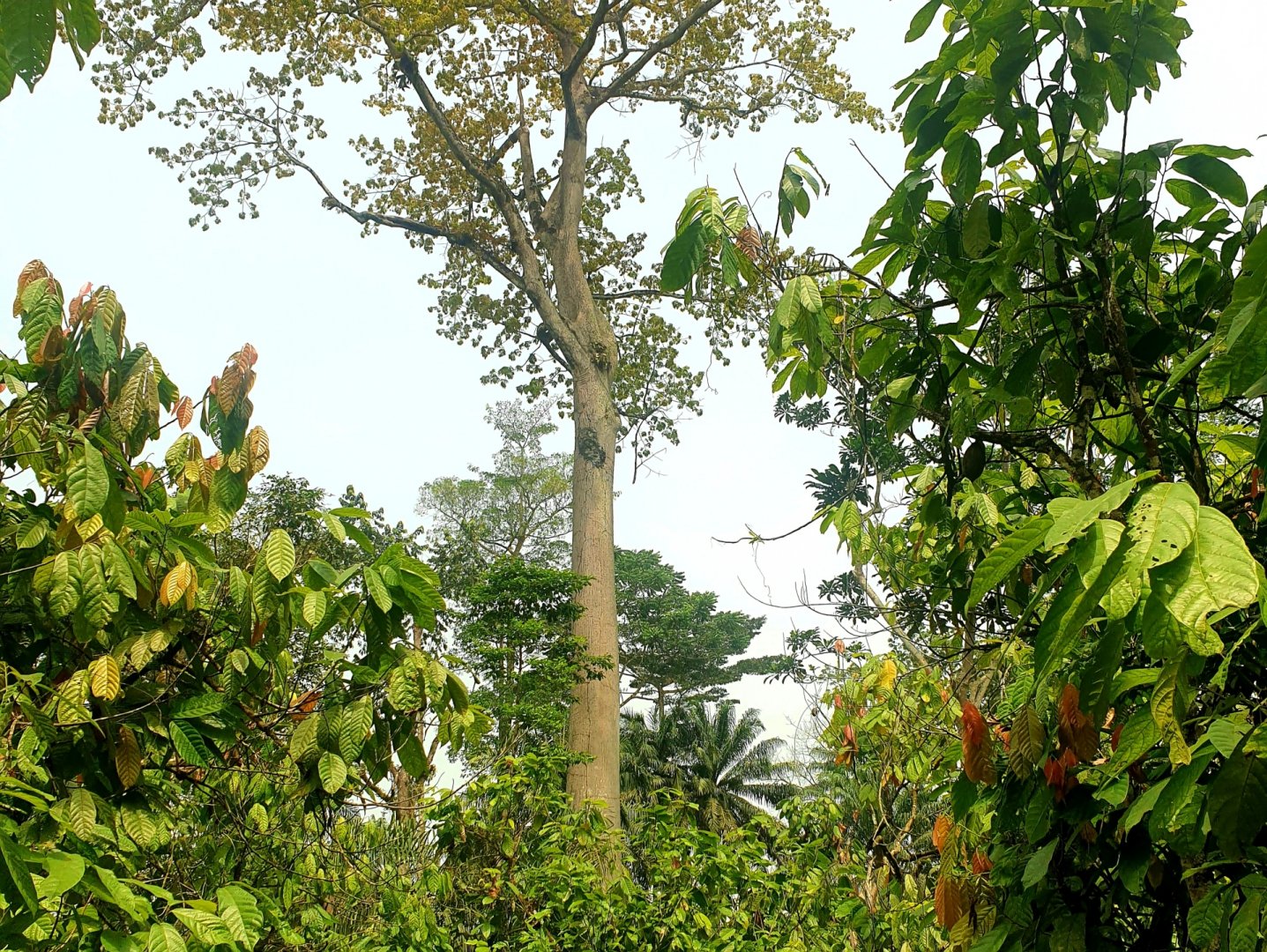

Nitidæ creates a framework to define, measure and guarantee agroforestry practices that are increasingly in demand by the market
Why a framework on agroforestry?
In the cocoa production sector, agroforestry appears to be one of the relevant levers for:
- help the agronomic management of plots (shade, maintenance of soil fertility, microclimate, pest management, etc.),
- contribute to the regeneration of the productive potential of degraded post-forest lands, and
- participate in maintaining cultivated biodiversity.
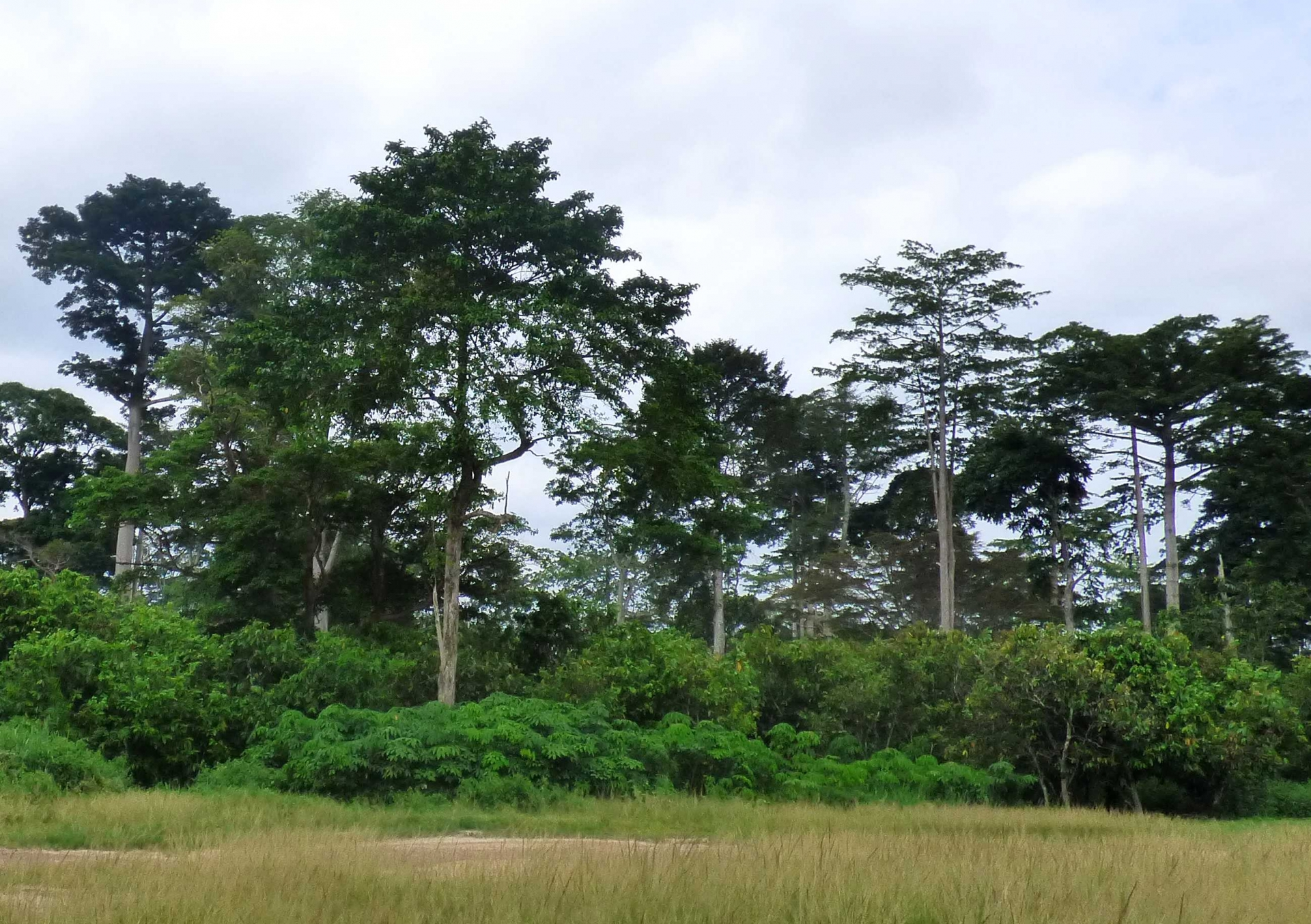
A complex and layered agroforestry system in Gnamienkro (Soubré, 2015)
While many definitions of agroforestry exist, none currently allows this mode of production to be valued in the markets on the basis of easily measurable indicators. This framework therefore proposes an approach making possible to promote this mode of production on world markets, while encouraging the transition from "full sun cocoa" cropping systems to agroforestry systems.
"Agroforestry product" claims pop up on the backs of packages, but what does it mean? What are the real commitments behind? Could this term with blurred outlines be used from the moment when only a few trees are planted with cocoa trees? Clarifying its definition and facilitating its measurement are the subject of this framework.
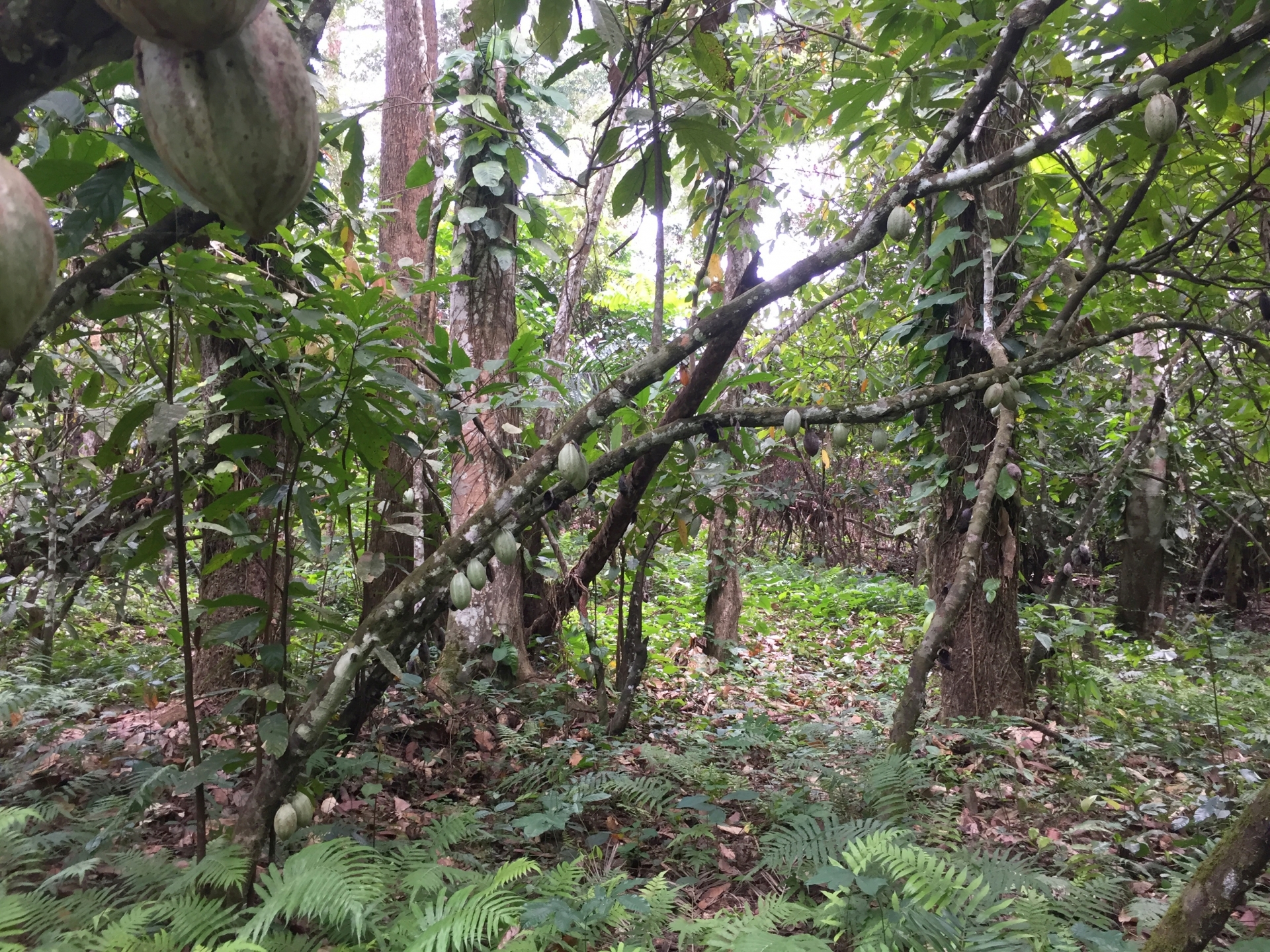
For such commitments, producers must be remunerated through Payments for Environmental Services - PES
Our proposal, simple criteria, measurable and usable by the private sector
There is a great diversity of agroforestry systems ranging from the simplest (association of cocoa trees with a species of fruit trees such as orange trees) to the most complex (association of fruit and forest species on several strata). It is therefore important that this framework be able to adapt to the strategy and objectives of farmers.
In addition, since an agroforestry system is complex and long to set up, it seems important to promote the efforts of producers who have initiated an agroforestry transition and who have not yet reached the cover and the diversity criteria of complex agroforestry systems.
The SAF-ART Agro-Forestry System & Transitional Regenerative Agriculture framework is therefore divided into two stages and makes possible to promote two types of cocoa production:
- A cocoa produced in a plot conducted in a mature Agro-Forestry System (SAF - Agro-Forestry System),
- A cocoa produced in a plot in transition to a SAF, following the voluntary engagement of a producer in regenerative farming practices (ART - Transition to Regenerative Agriculture).
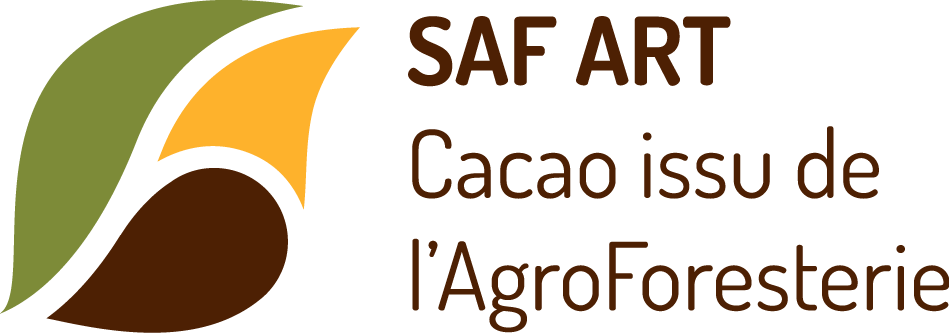
A framework that is more dynamic than normative, targeting future development rather than coercion on past practices
The selected control criteria
In order to meet the financial and operational constraints of the private sector and to guarantee both the reliability and the ease of collecting data to characterize the agroforestry system, two simple indicators will be monitored:
- The basal area (the basal area is a measure of the area occupied by tree trunks on the ground on the surface of the plot. It is a good indicator of the forest atmosphere of a plot and can be estimated in a few minutes using a relascope) which makes it possible to characterize the tree cover while avoiding exhaustive inventories, the heaviness of which would prevent the scaling of the standard.
- The distribution of the origin of the trees (remnant/spontaneous regrowth/plantation) which makes it possible to characterize the potential diversity of the trees present in the plot. Indeed, these three origins represent different species. Thus the origin of trees is used in this framework as a proxy for biodiversity in order, here again, not to have to resort to exhaustive inventories.
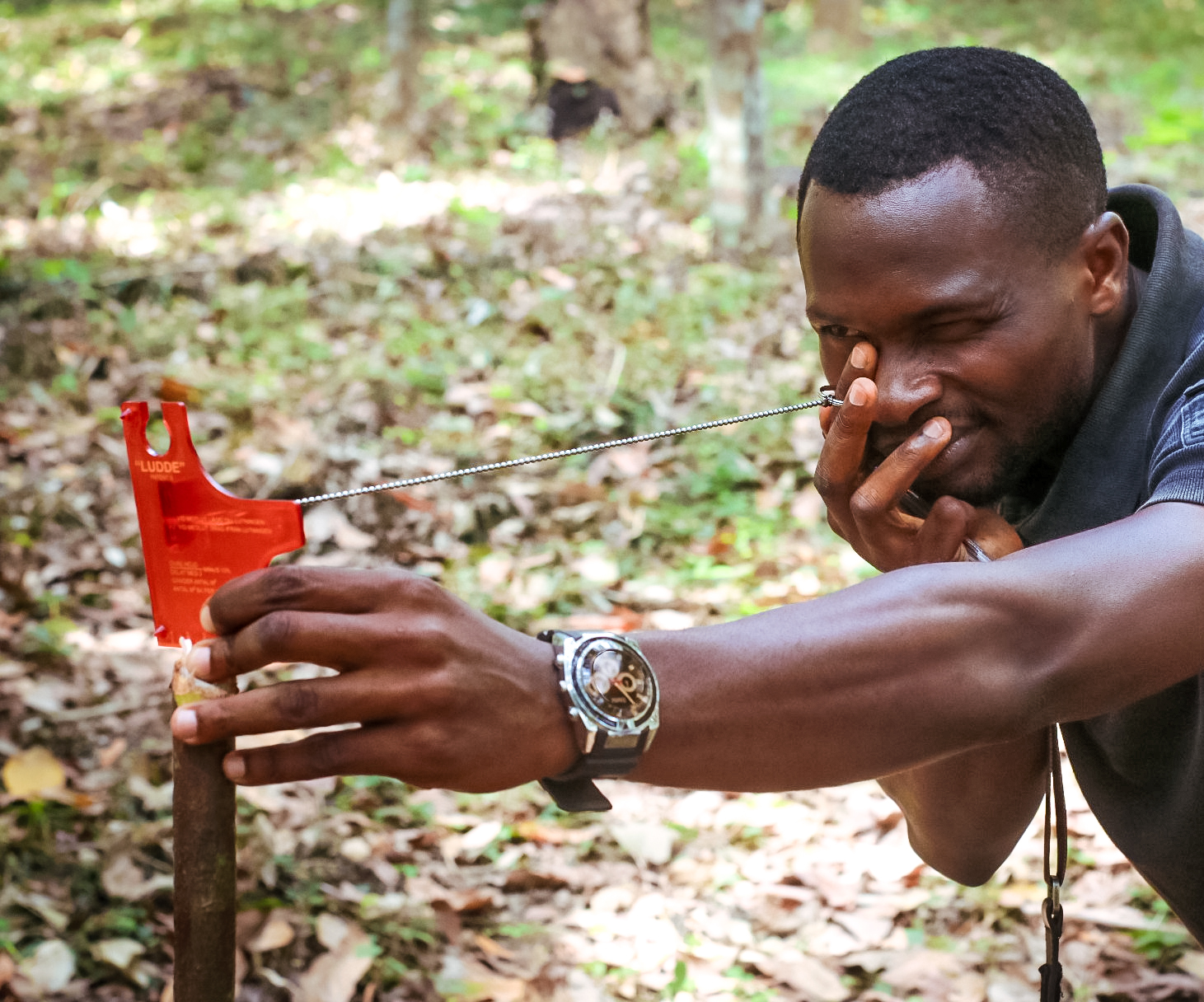
Measurement of the basal area of a cocoa plantation in Bieby for the PCBM cooperative
The agroforestry criteria retained in this framework are taken from the results of various scientific works:
- A new Payment for Ecosystem Services in organic cocoa agroforestry systems in Ivory Coast
- Local farmers shape ecosystemic services provisioning in West african cocoa agroforests

